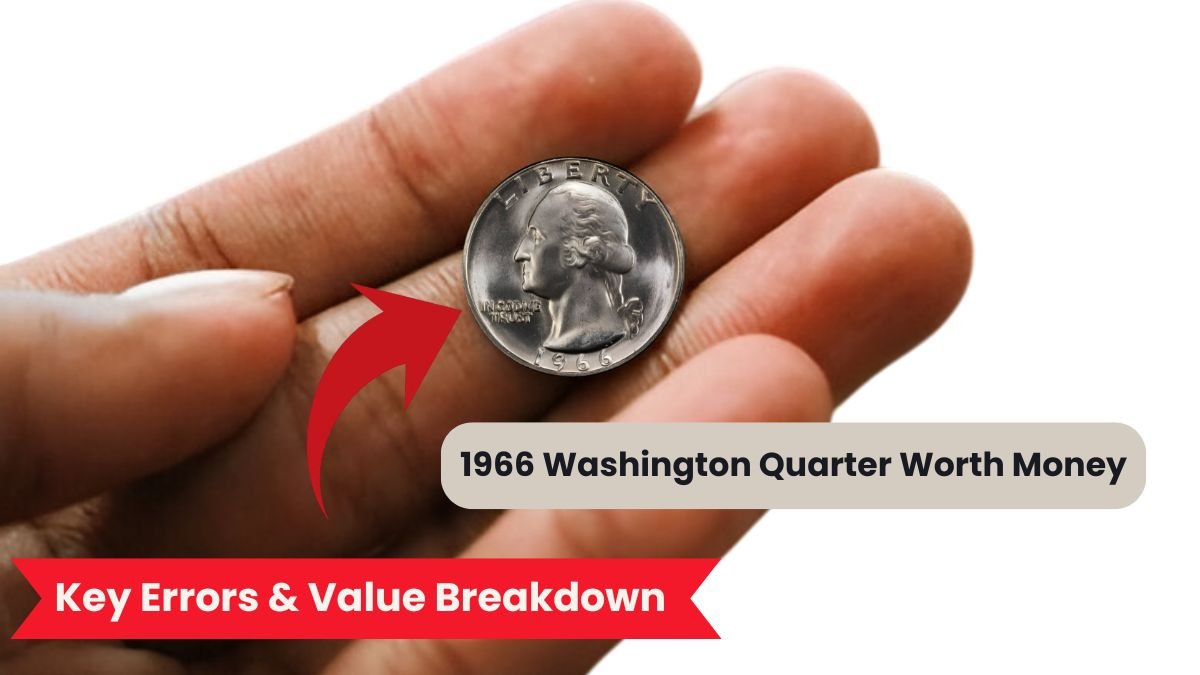The Washington Quarter of 1966 is one especially American coin, for during that year the United States began to circulate clad coins of copper-nickel alloy instead of silver. Pile up the 1966 Washington Quarters, and you have a common coin; however, rare errors and grades in high condition command serious dollars from collectors. Next, we will discuss the historical background, valuation, rare errors, and features of this coin.
Historical Background of the 1966 Washington Quarter
In the mid-1960s, the United States was suffering a coin shortage. The prime reason for this headache was that people were hoarding silver coins, triggered by continually increasing silver prices. Some degree of solution was provided by the Coinage Act of 1965, which changed the minting of the dime and quarter coins from 90 percent silver to copper-nickel clad. Thus the 1966 Washington quarter became the very first coin to be completely free of silver. Interestingly, for the next From 1965 to 1967, the U.S. Mint withheld mint marks on purpose to prevent through collectors the hoarding of coins. This policy helped to ensure a supply of coins among the general public.

Composition and Minting Information
- Composition: 75% copper, 25% nickel
- Core: Pure copper
- Weight: 5.67 grams
- Minting: 821,101,500 coins
- Mint Mark: None (no mint mark was given between 1965 and 1967).
Current Value of a 1966 Washington Quarter
Although a 1966 quarter is usually worth 25 cents, certain special circumstances and errors may result in a higher value.
| Condition/Type | Approximate Value |
|---|---|
| Circulated (Typical Wear) | $0.25 |
| Uncirculated (Mint State) | $1 to $3 |
| Special Mint Set (SMS) | $2 and up |
| High-Grade Specimens (MS67 or higher) | Up to $11,750 |
The Most Expensive 1966 Quarter Ever In 2019, an MS68-graded 1966 quarter was auctioned for $11,750. Rare Errors and Characteristics of the 1966 Washington Quarter
If you have a 1966 quarter, you should look for the following rare errors:
1. Doubled Die Error
- This happens when the die design is doubled (duplicated and minted).
- Such error coins may be priced anywhere from US$50 to US$500.
2. Struck-Through Error
- When a foreign object (such as grease or dust) causes part of the design to disappear.
- This error determines the coin’s value according to its rarity.
3. Off-Center Strike
- This error occurs if the coin is not aligned correctly and the design is crooked.
- It can cost anywhere from $10 to $1,000 depending on the severity of the error.
4. Filled Die Error
- When some design elements (such as the date numerals) become obscured during the minting of the coin.
- It can cost anywhere from $5 to $100.
- Rumors of a 1966 Silver Quarter
- Some people claim that some quarters were made from silver in 1966, but no such authenticated example has been found so far.
If a 1966 silver quarter is found:
- Weight: Should be 6.25 grams (instead of the usual 5.67 grams)
- Sound test: Silver coins sound slightly different.
- No authenticated 1966 silver quarter has been found so far, so seek expert advice before buying such a coin.
How to preserve and grade coins?
If you have a potentially rare or valuable quarter, it should be well protected.
- Do not touch the coin with bare hands.
- Keep it in a plastic case.
- Get it certified by PCGS (Professional Coin Grading Service) or NGC (Numismatic Guaranty Corporation).
- The correct grading can increase the coin’s value several times!
Conclusion
The 1966 Washington quarter is historically important, and its value can increase depending on errors, grading, and condition. If you have a coin with a high grade or rare error, it could be worth hundreds or even thousands of dollars. Therefore, if you happen to be having a 1966 Washington quarter, you should actually look at it and have an expert evaluate it to determine its potential worth.
FAQs
1. Why is there no mint mark on the 1966 quarter?
A. Between 1965 and 1967, the U.S. Mint withheld the mint mark on the coins to prevent hoarding.
2. Are all 1966 quarters only worth 25 cents?
A. No. High-grade specimens, or those with rare errors, may be worth $1,000 or more.
3. How to tell if a 1966 quarter has a doubled die error?
A. Look for doubling on various design elements, especially letters and numbers. Use a magnifying glass to assist.
4. Where can I sell my 1966 quarter?
A. You can auction through eBay, etc., Heritage Auctions, PCGS, or a coin specialist.
5. Are Special Mint Set (SMS) quarters from 1966 worth more?
A. Yes, 1966 SMS quarters have a special finish and higher quality. If they are in high grades (MS67+), they can be worth significantly more than regular strikes.



